Excerpts from Jim Conrad's
Naturalist Newsletter
entry dated April 1, 2022, issued from near Tequisquiapan, elevation about 1,900m (6200 ft), ~N20.57°, ~ W99.89°, Querétaro state, MÉXICO
FIDDLEWOOD FLOWERING
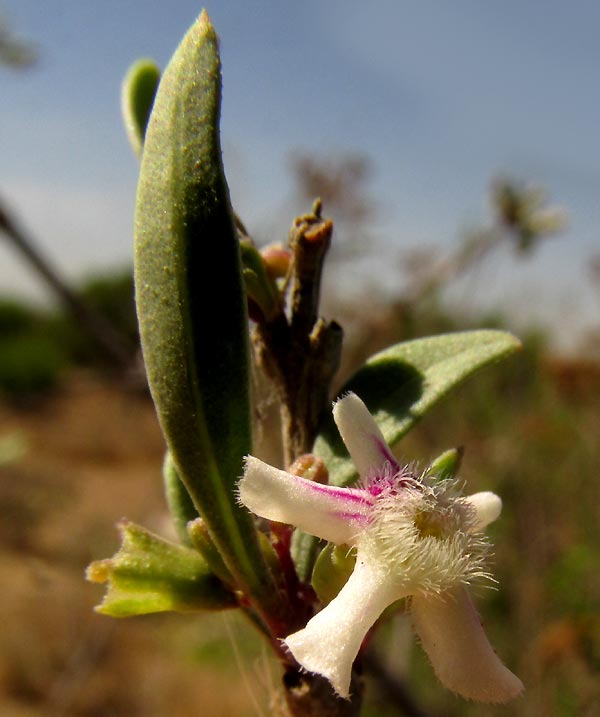
The above flower, only about 3mm long (0.1 inch), was easy to miss, and in our current hot, very dry, dusty, sun-parched landscape, unexpected. But just look at its interesting form: the slightly bilaterally symmetrical corolla with purple nectar guides on two corolla lobes; the long-hairy rim surrounding the corolla tube's opening; and the short cilia at corolla lobe tips. Here's a side view of the above flower:
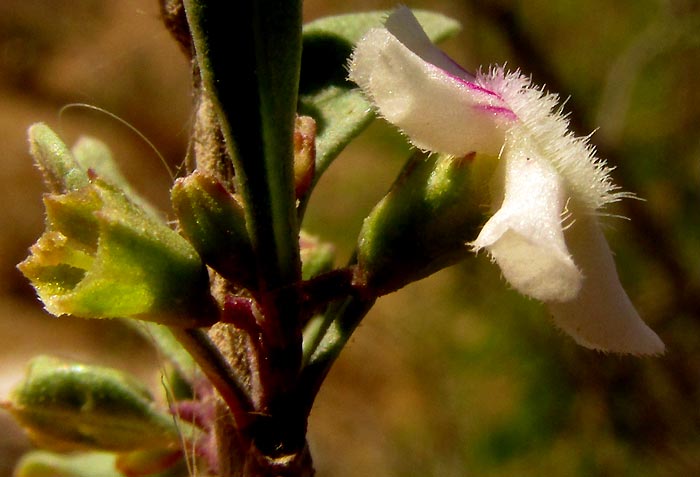
The green calyx below the corolla, instead of producing regular sepals, consists of a deep, urn-shaped structure with five shallow teeth. You can begin to understand why these attractive blossoms are so easy to overlook when you see how this cluster of flowers and emerging leaves appear at the end of long, stiff branches, as shown below:
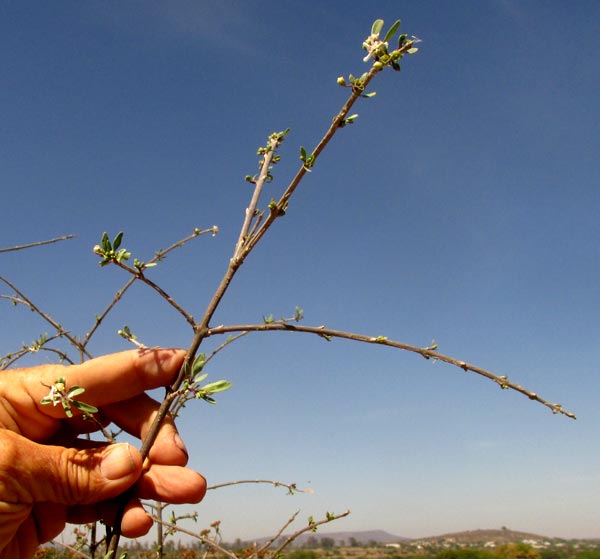
Those branches, by the way, show us that on this woody shrub the leaves arise opposite one another, not alternating from one side of the stem to another. Also, the young twigs are squared, as shown below:
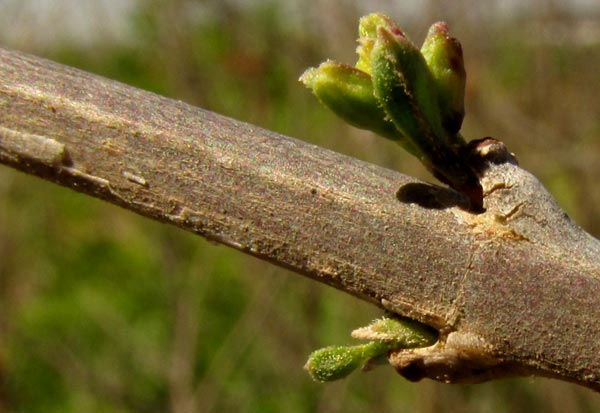
When you see how the above branches lose themselves in the head-high bush's interlocking maze of branches, you'll be impressed that the flowers were ever discovered:
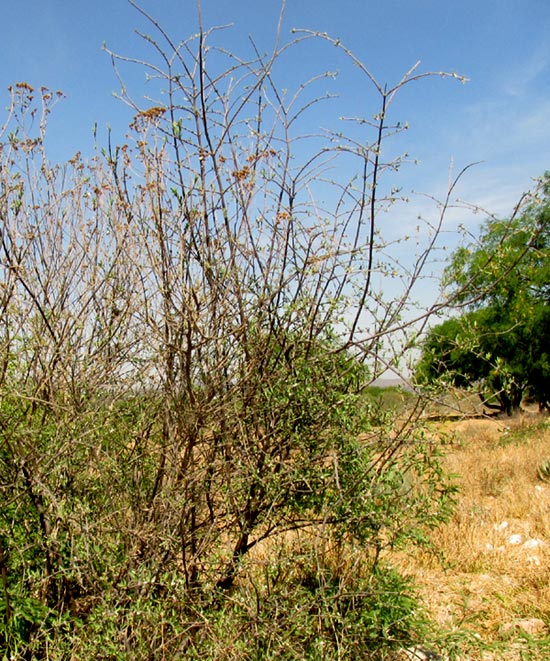
These shrubs typically grow up through other scraggly bushes and weeds. In the picture, our flowers are on the branches reaching toward the image's top, right corner.
So, we have a plant with square stems and opposite leaves, and slightly bilaterally symmetrical flowers looking like little dog-heads. Normally that means something in the Mint or Verbena Families, and since this plant's corollas are suggestive of lantana flowers in the Verbena Family, the identification process was begun in that family. The online Flora del Bajío, with our area considered part of the central Mexican upland Bajío region, has its Verbena Family finished, so with its help the species could be keyed out, the ID confirmed with pictures on the Internet.
Our plant reveals itself as one of numerous species which in English are called fiddlewood, though this species itself has no English name. In Spanish it's sometimes called Cacao Blanco, or "White Cacao," though it has nothing to do with Cacao. It's CITHAREXYLUM LYCIOIDES, the genus name Citharexylum explaining the English name fiddlewood. For, in classical Greek, the word κιθάρα, or kithara, means "lyre," which is close enough to being a fiddle, and ξύλον, or xylon, means wood. Kathara-xylon becomes "fiddlewood."
Our particular fiddlewood, Citharexylum lycioides, is endemic just to five or six states in upland central Mexico, preferring limestone areas despite our geology being mostly of igneous and metamorphic origin. It inhabits desert scrub and tropical deciduous forest mainly between 1800 and 2150 meters in elevation. In its limited area of distribution it's considered to be moderately frequent to common.
entry dated May 23, 2022, issued from near Tequisquiapan, elevation about 1,900m (6200 ft), ~N20.57°, ~ W99.89°, Querétaro state, MÉXICO
FIDDLEWOOD FRUITING
The same bush featured above now is producing fruits looking like little tomatoes, as shown below:
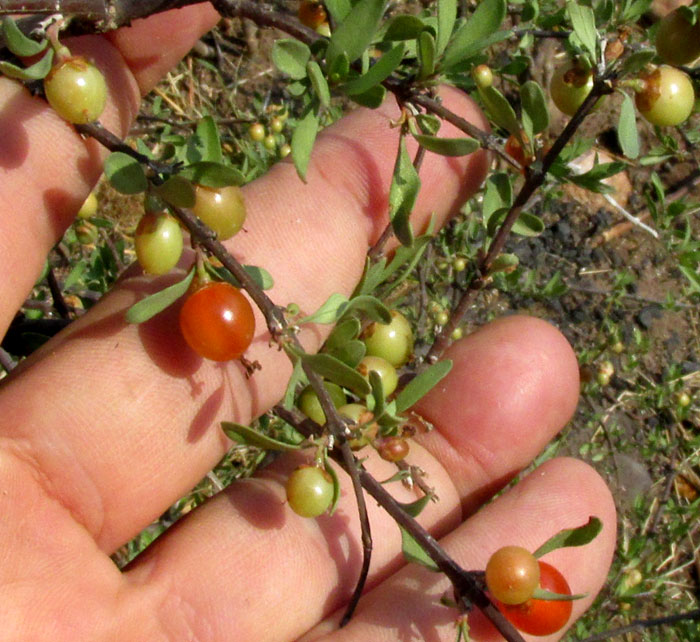
The fruit is a drupe with two pyrenes, a drupe being a fleshy fruit with thin skin, such as with the plums, almonds and cherries. Pyrenes are often called "stones," and aren't the same as seeds. In the case of fiddlewood species, genus Citharexylum, each of the two pyrenes is two-seeded. When the red fruit is squashed, the two pyrenes are apparent:
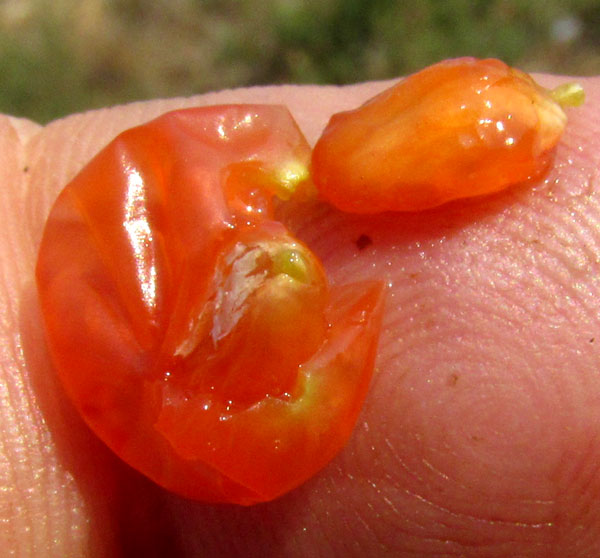
The fruit was so similar to a tiny tomato that I had to taste it. It had no strong taste, maybe a slight bitter-resiny flavor. I read that the fruits of some Citharexylum species are eaten, but no mention is made of this species' edibility. I read that the ripe fruit eventually turns black. Another Citharexylum species in this region has fruits that first are green, then red, then finally black.
entry dated July 7, 2022, issued from near Tequisquiapan, elevation about 1,900m (6200 ft), ~N20.57°, ~ W99.89°, Querétaro state, MÉXICO
NO BLACK FRUITS
Above it was noted that I'd read that this species' fruits turned from red to black. Now in July when some bushes already are dropping their fruits, it's apparent that they don't:
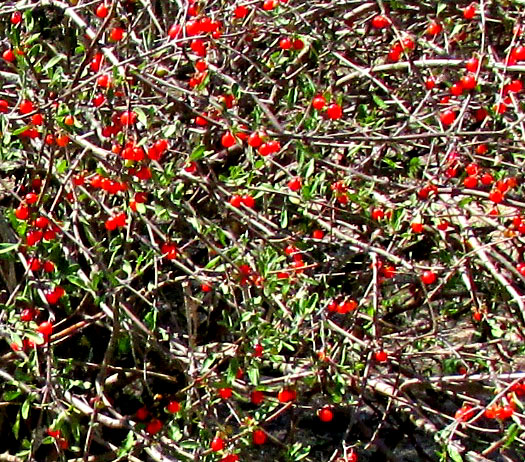
Now the question to resolve is why so many fruits are simply falling to the ground when it seems that birds should be gorging on them.